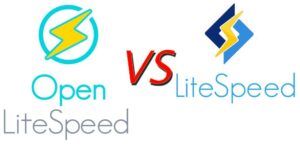When it comes to web servers, both OpenLiteSpeed and LiteSpeed are popular choices, but understanding the differences between them is crucial to making the right decision for your needs. These two servers, while similar in many respects, cater to different audiences and use cases.
OpenLiteSpeed is the open-source version of LiteSpeed, offering many of the same performance benefits but with fewer features and a more DIY approach. It’s ideal for users who appreciate the flexibility of open-source software and are comfortable with a bit more hands-on management. On the other hand, LiteSpeed is the premium, fully-featured counterpart that comes with paid licensing. It provides a more polished, user-friendly experience with additional features such as advanced caching, security enhancements, and technical support, making it a go-to choice for businesses that need a reliable, high-performance web server with robust support.
Choosing between the two often comes down to the specific requirements of your project. If you’re running a personal website or a small project where cost and customization are key, OpenLiteSpeed might be the perfect fit. However, for larger enterprises or mission-critical websites where uptime, security, and professional support are non-negotiable, investing in LiteSpeed could be well worth the price.
Ultimately, both OpenLiteSpeed and LiteSpeed offer powerful performance, but the right choice depends on your unique needs and resources. Whether you prefer the freedom of open-source or the comprehensive support of a licensed product, understanding the key differences will help you make an informed decision that best suits your web server needs.

